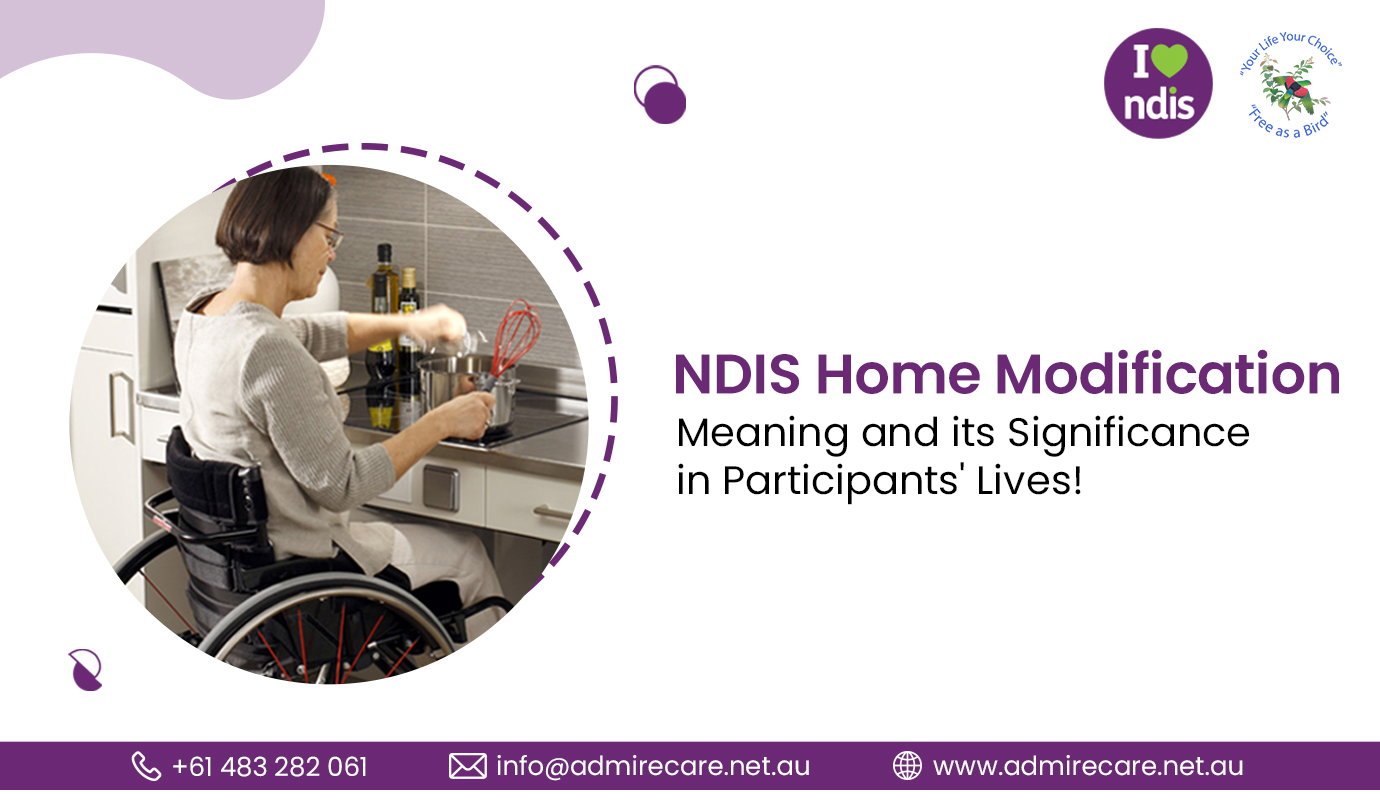NDIS Home Modification - Meaning and its Significance in Participants' Lives!
Have you ever imagined the difficulties people with disability face in their daily lives? It's beyond measure for physically capable people like us. Think of depending on someone or attached to equipment while going to the bathroom, kitchen, or bed. It's not a good sight or thing to carry, right? Well, many individuals live that way.
However, thanks to NDIS (National Disability Insurance Scheme), which came as a blessing for people with disability. The organization has made life easy with its numerous flagship schemes, support, and service offerings.
NDIS has countless services ready for disabled individuals. Like many, Home Modification is one of the viable components of the NDIS. It is designed to ease participants home staying with appropriate equipment installation and modifications.
This blog post will help you explore the true meaning, the right time for its implementation in your life, and how it will help you lead a successful and happy life.
NDIS Home Modification - What does it mean?
Home modifications refer to changes made to a participant's home to make it safer, more accessible, and easier to use for people with disabilities.
Some examples of home modifications include:
- Installation of wheelchair ramps
- Grab rails in bathrooms
- Widening of doorways to accommodate mobility aids
- Modification of kitchen and bathroom fixtures.
NDIS home modifications are funded through a participant's NDIS plan, tailored to their needs and goals. The NDIS has divided the home modifications into two sections.
Category A - Modification cost below $10,000
Category B - Modification costs surge between $10,000 to $20,000.
The NDIS works with participants and their support teams to determine which modifications are necessary and appropriate and how they will be funded and implemented.
What's the right time to enable Home Modification?
There's no right time, to be honest. It all depends on the participant's needs and circumstances. In contrast, it is best to consider home modification only when a person with a disability finds difficulty in performing daily activities or accessing parts of their home due to physical barriers.
Some common signs when home modifications become inevitable are:
- Difficulty getting in and out of the home
- Difficulty moving around the home due to narrow doorways or hallways
- Difficulty using the bathroom or shower
- Difficulty accessing kitchen or storage areas
- Risk of falling due to uneven flooring or steps
- Need for assistive devices such as grab bars or handrails
Remember, an NDIS accessor will visit your home to inspect your home modification request to check and gather enough evidence before final approval.
Role of a Home Modification Accessor
A home modification accessor is non-other than an occupational therapist. He/she must possess high-end skills offer unified home modification services.
To provide home modification funding to any participants, NDIS requires proper evidence. An occupational therapist or home modification accessor collects that evidence and ensures seamless integration of those services.
An individual must comprise the following qualities to become an NDIS home modification accessor:
- Relevant qualifications and expertise to meet the occupational therapist requirements
- Sheer understanding of the NDIS scope and purpose to adhere to participants' goal
- Post-graduation degree and training in assessing, specifying, and implementing complex modifications
The certification they require for this NDIS assessment
- Associate Member of Association of Consultants in Access Australia (ACAA)–professional credential
- Nationally Recognised Training modules CPPACC4020 and CPPACC5016
- Peer-reviewed education and training on Complex Home Modification that refers to Occupational Therapy Australia
- NDIA-authorized training in Complex Home Modification assessment during the first stage of the NDIS before 30 June 2016
Importance of Home Modification in NDIS Participants' Life
Home modifications provide numerous benefits to NDIS participants with disabilities. Some of the key benefits of home modification include:
Improved safety
Home modifications such as adding grab rails, hand-held showerheads, and non-slip flooring can help prevent accidents and injuries. Participants can now move from their room to the bathroom, hall, or balcony without worrying about home accidents
Increased independence
Required Home modifications have helped NDIS participants with disabilities to perform daily tasks more efficiently, without depending much. This results in higher independence and reduces their reliance on others for assistance.
Enhanced accessibility
Home modifications such as adding ramps, widening doorways, and installing stairlifts can improve accessibility and enable participants to move around their homes more freely.
Improved mental health
When you start moving into your home without much support and anticipate daily activities like bathing and cleaning, it will keep you proactive throughout the day. In contrast, you will feel much more relaxed.
Bottom Line
Home modification is the best thing that has happened to NDIS participants, and it's an excellent investment in your comfort, safety, and independence. So far, many have benefitted from Home Modification.
By making suitable changing your living space, you can create a home tailored to your unique needs and preferences, allowing you to live your best life possible.
For more information and end-to-end support, contact Admire Care - a registered NDIS Home Modification Provider in Perth, WA!

 Increase Text
Increase Text
 Decrease Text
Decrease Text High Constract
High Constract Links Underline
Links Underline Readable Font
Readable Font Reset
Reset